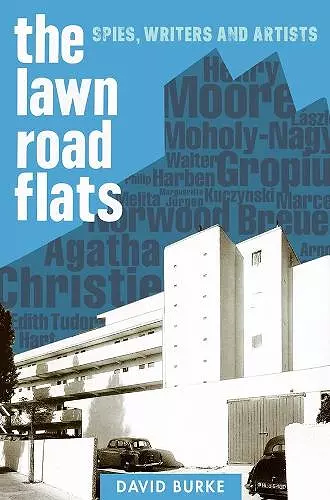The Lawn Road Flats
Spies, Writers and Artists
Format:Paperback
Publisher:Boydell & Brewer Ltd
Published:25th Oct '19
Should be back in stock very soon
This paperback is available in another edition too:
- Hardback£30.00(9781843837831)

The story of a modernist building with a significant place in the history of Soviet espionage in Britain, where communist spies rubbed shoulders with British artists, sculptors and writers The Isokon building, also know as Lawn Road Flats, in London was the haunt of some of the most prominent Soviet agents working against Britain in the 1930s and 40s, among them Arnold Deutsch, the controller of the group of Cambridge spies who came to be known as the "Magnificent Five" after the Western movie The Magnificent Seven; the photographer Edith Tudor-Hart; and Melita Norwood, the longest-serving Soviet spy in British espionage history (andinspiration for Judi Dench's character in Red Joan). However, it wasn't only spies who were attracted to the Lawn Road Flats. The crime writer Agatha Christie wrote her only spy novel N or M? in the Flats, and anumber of other artists, architects and writers were also drawn there, among them the Bauhaus exiles Walter Gropius, László Moholy-Nagy and Marcel Breuer; the sculptors and painters Henry Moore and Barbara Hepworth; the novelist Nicholas Monsarrat; the writer and founder of The Good Food Guide Raymond Postgate; and the poet (and Bletchley Park intelligence officer) Charles Brasch. The Isokon building boasted its own restaurant and dining club, wheremany of the Flats' most famous residents rubbed shoulders with some of the most dangerous communist spies ever to operate in Britain. Agatha Christie often said that she invented her characters from what she observed going on around her. With the Kuczynskis - probably the most successful family of spies in the history of espionage - in residence, she would have had plenty of material. This book tells the story of a remarkable Modernist building and its even more extraordinary cast of characters. DAVID BURKE is a historian of intelligence and international relations and author of The Spy Who Came In From the Co-op: Melita Norwood and the Ending of Cold War Espionage and Russia and the British Left: From the 1848 Revolutions to the General Strike.
The book is the product of excellent detective work on Burke's part [and is] a compelling, original and insightful read, often providing minute details of everyday espionage, while chronicling artistic movements and political upheavals engagingly. * HISTORY *
Burke's book is constructed like the building itself: each chapter has at its centre a life story of one or other key resident of the ISOKON, and these stories are as interconnected as were the tenants at the Lawn Road Flats. ... [Its] history has now been meticulously restored by David Burke. * TIMES LITERARY SUPPLEMENT *
A fascinating book. * CHARTIST *
Burke intersperses his painstakingly detailed research with fascinating glimpses of life at the time, drawing on stories and letters that bring his account into vivid relief. * TIMES HIGHER EDUCATION SUPPLEMENT *
A lively and vivid chronicle of a generation shaped by war, political upheaval and idealism. * HISTORY TODAY *
Cocktails, glamour, spies - Bond would love it. * SAGA MAGAZINE *
Burke proves to be a brilliant sleuth...and is insightful on the...daily detail of a spy's life. * TIMES *
This book, like the Lawn Road flats themselves, is full of surprises. -- Lynn Barber * SUNDAY TIMES *
Reveals the staggeringly rich artistic and political machinations that took place within. * FINANCIAL TIMES *
ISBN: 9781783274703
Dimensions: unknown
Weight: 465g
309 pages